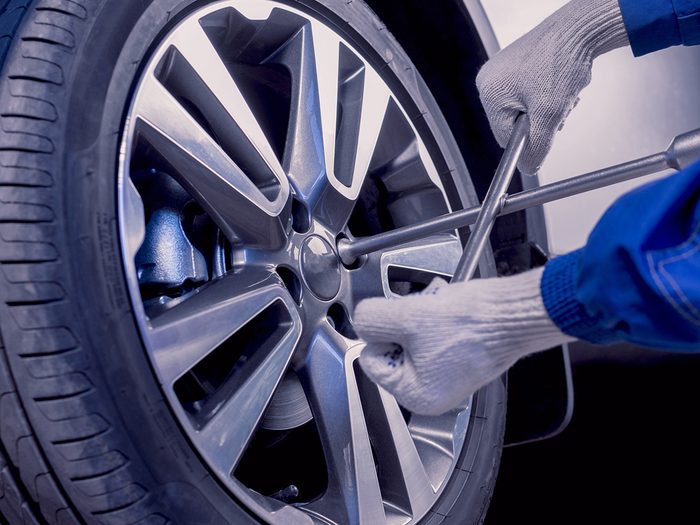
Why Tighten Car Parts?
Sometimes it’s a rattle, or maybe a loud thud. Keeping parts securely tightened and bolted together lessens the possibility of premature part wear and failure, reduces overall vehicle operating expenses and makes driving more fun.
Once a nut or bolt becomes loose, it can quickly become unfastened. Failures due to loose parts can have nasty consequences. If you hear strange car noises when accelerating, stopping, turning or driving over a pothole, it usually means one of the 30,000 or so parts in your car is loose.
Although modern cars can be held together with adhesives, plastic rivets, or speed nuts, the humble nut and bolt still make up the majority of fasteners.
Fasteners may loosen due to:
- Vibration
- Parts expanding and contracting
- Not being properly tightened in the first place
- Damaged or corroded threads
- Using an incorrect grade nut or bolt
Pinpointing a loose fastener can be tricky, but it’s worth the time and effort. Look for these telltale signs that indicate loose parts:
- Shiny wear marks
- Rust stains
- Worn paint
Every bolt type and grade has a specific torque specification (spec). If using a torque wrench to tighten loose fasteners, torque to 50% of spec, then to 100%. So if a bolt’s tightening torque is rated 150 foot-pounds (ft-lb), first torque all bolts to 75 ft-lb, then 150 ft-lb.
Performing a DIY “safety tightening” as part of your annual maintenance schedule can eliminate rattles and noises plus identify potential problems, avoiding a costly crisis before it starts.
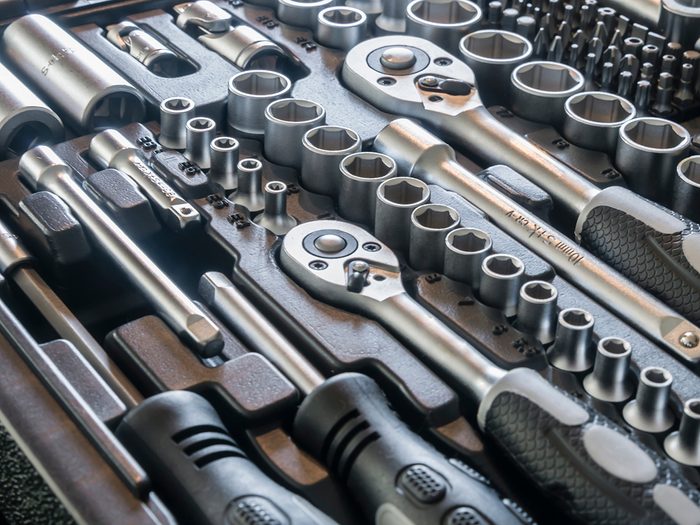
How To Tighten Loose Car Parts
You’ll need a 1/4-in., 3/8-in. and 1/2-in. drive standard and metric socket set (use six-point sockets if you have them), safety glasses and gloves, as well as a floor jack and safety stands. Box-end wrenches also work well, but you cannot measure torque.
Do not use an open-end wrench for final tightening. Its weaker jaws can spread open, rounding off a bolt head or slip off, causing an injury. Make sure the socket or wrench head fits fully and snugly on the nut or bolt head.
Here’s what to do if a part becomes loose:
- If rusted, spray the fastener with a rust penetrator, let it sit for five to 10 minutes, then loosen the fastener to free it up. Torque to spec.
- If exposed threads are rusty, clean with a wire brush, then spray before trying to loosen or tighten.
- If parts are still loose after tightening, remove the fastener and check if the threads are damaged. Rust, corrosion or gunk buildup at the bottom of a bolt hole not fully drilled and threaded through a part may force a bolt to bottom out before it can be fully tightened. Use rust penetrator to clean and flush the holes. Restore the threads if necessary.
- Always use the same gauge and length fastener when replacing a nut or bolt. A too-short bolt will easily loosen because it won’t fully engage the nut. A too-long bolt can bottom out and crack whatever part you’re screwing into.
- The threads of a bolt fill approximately 80% of the threads of a nut, and vice-versa. Rust, corrosion, dirt or damaged threads will prematurely reach full torque, but technically are still loose. Fasteners with clean and lubed threads will install quicker, torque more accurately and maintain proper tension.
The following simple DIY repairs can save you from replacing parts costing hundreds of dollars.
Here are 20 essential tools for the home mechanic.
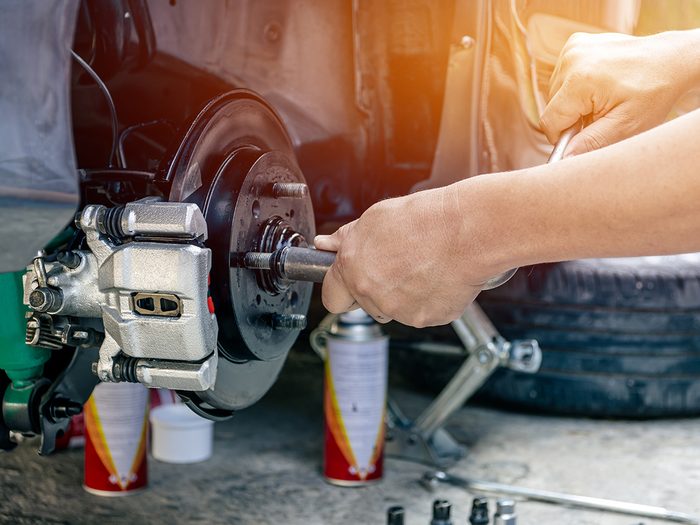
Wheel Lug and Hub Bearing Nuts
Remove any rust from exposed threads. Loosen, then retighten lugs, nuts or bolts in a star or cross-cross pattern to spec, using a torque wrench or digital torque adapter. Always replace rusty or rounded lug nuts and bolts; never try to rethread or restore damaged wheel studs or lug nuts and bolts.
Loose wheel hub bearing nuts can cause the steering wheel to shake at low to medium driving speeds. If the hub nuts are loose, tighten, then replace with new, usually 30 millimetres or larger. Many parts stores lend tools if you don’t have this size socket in your toolbox.
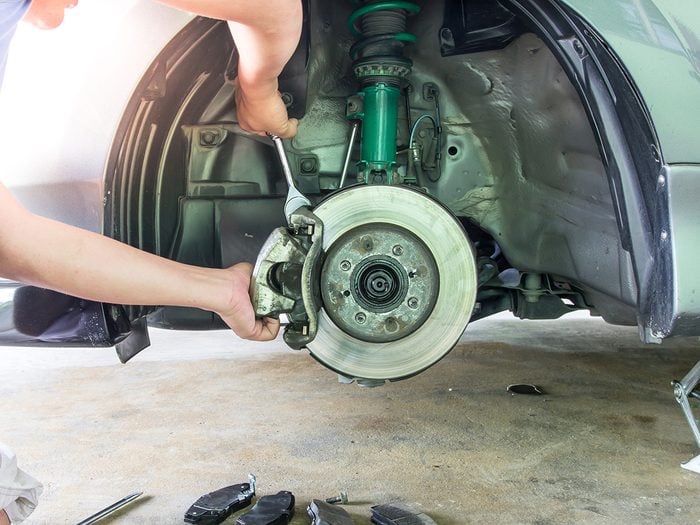
Brakes
Loose disc brake mounting hardware can cause rattling while driving over bumps or potholes.
Safely jack up your car and remove the wheels. Inspect the disc brake caliper mounting bolts (usually in a bracket behind the rotor) for visibly loose or worn parts. Loose brake hardware can cause brake pads and rotors to wear unevenly or the steering wheel to vibrate while stopping. Save $100 or more if you properly lube, clean and tighten brake hardware.
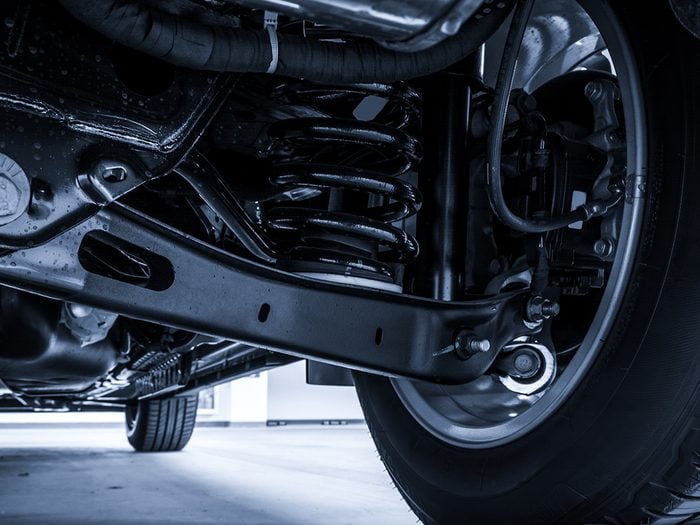
Suspension
Loose suspension hardware or fasteners can cause a sharp snapping or crack when driving or turning. It may also cause uneven tire wear or vibrations when stopping. With the wheels off, inspect and tighten:
- MacPherson strut and/or shock absorber mounting bolts or nuts.
- Loose sway arm links.
- Tie-rod ends to steering knuckle nuts. If secured by a cotter pin, remove it, tighten the castle nut and install a new cotter pin. After tightening, if the hole for the cotter pin is below the nut and doesn’t engage the castle nut, replace the tie-rod end.
- If the tie-rod is secured by a prevailing torque fastener and you cannot tighten the nut, replace the tie-rod end. Replacing tie-rods ends yourself can save $100 to $400. Have your mechanic align the front suspension immediately afterward.
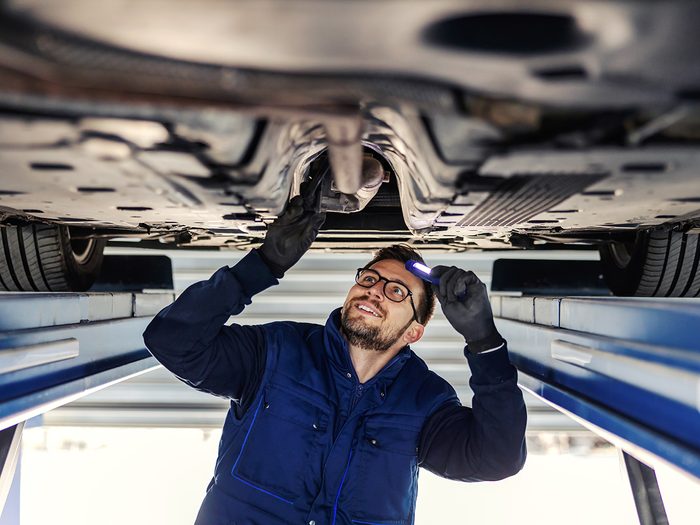
Exhaust System
Metallic clanking, rattling or vibrations from under your car on acceleration indicate a misaligned exhaust system caused by a loose muffler clamp or mounting bracket/hanger.
When the exhaust is cool, grab and shake the tailpipe. It’s normal for an exhaust system to move slightly. Listen for parts knocking into each other, especially the tinny sounds given off by a loose heat shield.
Working safely and wearing eye protection, carefully spray fasteners with rust penetrant. Using six-point sockets, tighten all muffler clamps, mounting brackets and heat shield nuts and bolts. Replacing broken or rotted muffler clamps, exhaust hangers or insulators yourself can save $50 to $100 in parts and labour.
A loose exhaust system can cause muffler or catalytic converter failures. Replacing those are best left to your mechanic.
Discover 13 ways you’re shortening the life of your car.
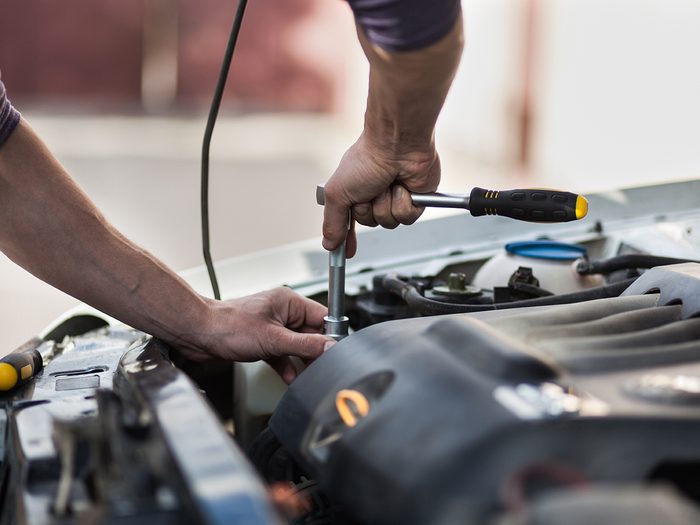
Under the Hood
Rattling or squeaking from under the hood can be caused by loose battery hold down bolts, engine support bolts or component mounting bracket fasteners.
A bouncing battery will short-circuit, greatly shortening its life expectancy. Depending on the battery’s location, the terminals can short-circuit against the underside of the hood or the seat cushion support springs. The latter can cause a fire.
Check the telltale signs listed above and check that all mounting brackets, pulleys, tensioners and idler wheels are secured tightly to the engine. Also check for a loose fender radiator support, hood and hood latch, and bumper support fasteners.
Gently snug loose valve cover and engine oil pan bolts if you notice oil stains around them, not puddles of oil. Taking a half-hour to tighten every nut and bolt you can see and reach under the hood can potentially can save you hundreds, if not thousands of dollars, while reducing breakdowns.
Here are 13 car problems you’ll regret ignoring.
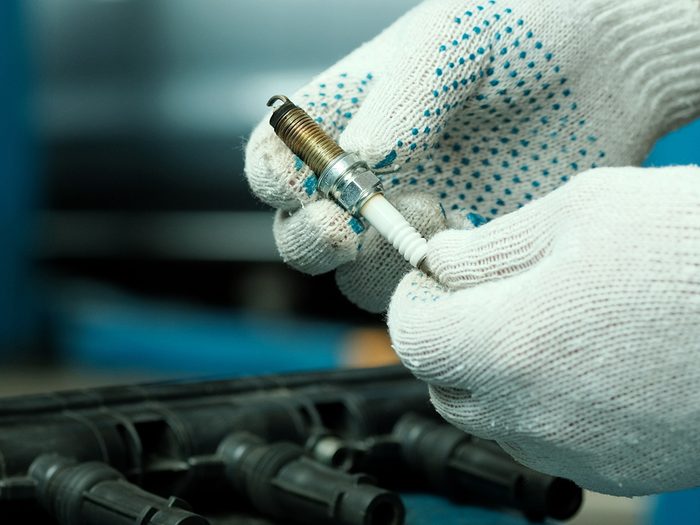
Spark Plugs
If spark plugs work their way loose, they sound like an exhaust leak. They can blow right out of the cylinder head, taking the threads with them. Over-tightening can distort the plug or cylinder head threads, making it virtually impossible to remove without damaging the head. You can save money by correctly replacing spark plugs yourself.
Find out the surprising ways you’re wasting money on your car.
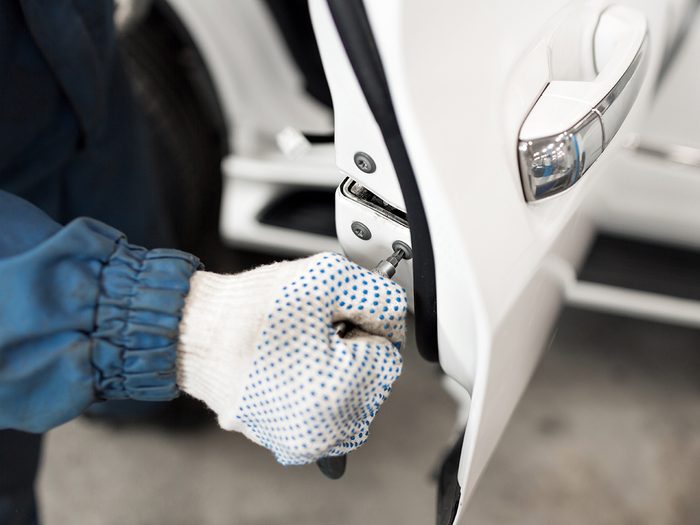
Other Critical Parts
A loose seat track that’s rocking back and forth, or a door that won’t stay latched properly, are extremely dangerous. A seat track not firmly anchored to the frame and/or floor can cause a driver’s foot to come off the brake pedal when trying to stop. Check all seat-attaching bolts, especially if you feel any movement in the seat.
A loose door latch or striker can cause a door to pop open and eject an occupant during an accident, especially if they’re not wearing a seat belt. Tightening both are simple 15-minute DIY repairs that save you from replacing difficult-to-install, pricey door latches ($100 to $300), or having plates welded to the floorboards if the seat bolt threads rip out. Most of all, it can save lives.
Next, find out 20 secrets your mechanic won’t tell you.